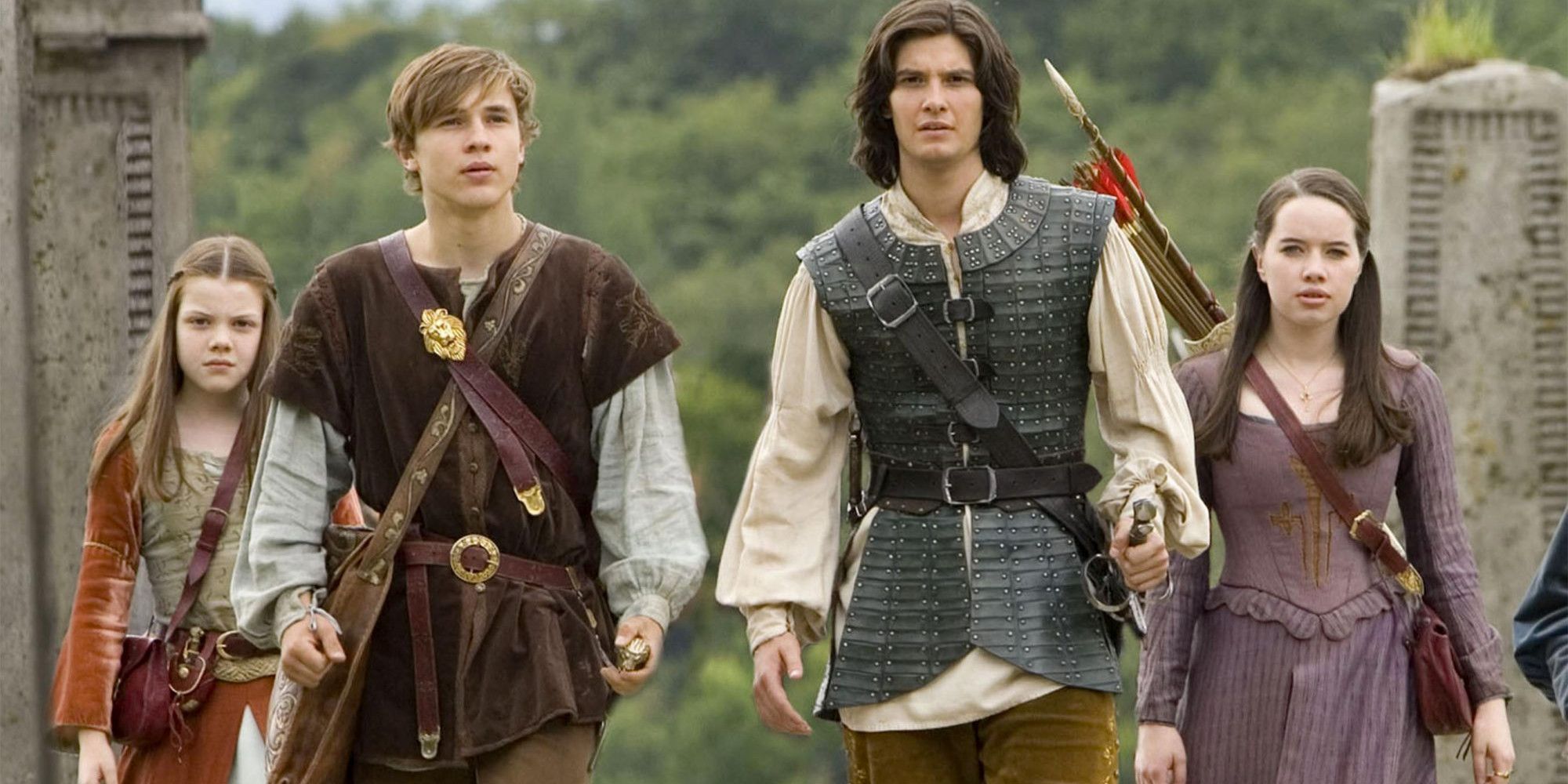
The Untold Story Behind Disney's Narnia Franchise: From Sensational Success to Shocking Box Office Decline in Just 3 Years

Disney's Chronicles of Narnia franchise plummeted from a $750M success to a box office disappointment Explore the reasons behind Prince Caspian's underperformance and Disney's failure with the final Narnia film Discover how Netflix's upcoming reboot can learn from Disney's mistakes
Disney's Chronicles of Narnia movie franchise got off to a phenomenal start at the box office. However, the sequel that followed was a major disappointment. Released in 2005, "The Lion, the Witch, and the Wardrobe" is a film adaptation of C.S. Lewis' beloved novel of the same name. The book itself is an iconic fantasy novel of the 20th Century and serves as the first entry in the seven-book Chronicles of Narnia series. Disney saw this film as their response to the immensely successful Harry Potter movie franchise by Warner Bros.
The initial film in this planned franchise was a massive hit and held great promise for future installments. "The Lion, the Witch, and the Wardrobe" brought in an astounding $745 million worldwide (via Box Office Mojo). Despite having a hefty budget of $180 million, the movie's profit was still highly impressive. This movie served as the foundation for Disney's new franchise, leading many to believe that the sequel, "Prince Caspian," would be equally successful. However, this was not the case. By the time the third installment, "The Voyage of the Dawn Treader," arrived in 2010, public interest in the franchise had completely faded, resulting in four of the seven planned movies being left unproduced.
Why Prince Caspian's Box Office Was So Much Lower Than The Lion, The Witch & The Wardrobe
The Lion, the Witch, and the Wardrobe was a massive success, grossing $745 million. In contrast, Prince Caspian was a box office disaster, earning only $418 million worldwide. This significant drop in earnings, coupled with the inflated budget of $225 million, contributed to Prince Caspian's underperformance compared to its predecessor. There are several factors that explain why the film failed to resonate with audiences, much like other Chronicles of Narnia adaptations. Firstly, Prince Caspian lacked the magic, whimsy, and excitement that made The Lion, the Witch, and the Wardrobe so successful. This resulted in a worse reception from audiences and a lower Rotten Tomatoes score. Additionally, with a runtime of 150 minutes, the film felt overly long and was exacerbated by its somber tone.
Prince Caspian also faced stiff competition at the box office, pitted against the formidable rivals Indiana Jones and the Kingdom of the Crystal Skull and Iron Man. This rivalry took place during a period when Disney did not yet own Marvel Studios, and Iron Man was not yet a beloved superhero character. Disney may have underestimated the potential threat posed by Iron Man, which turned out to be a surprising smash hit. However, the most detrimental factor to Prince Caspian's success was Disney's misguided expectation that the film would thrive solely on the popularity of its predecessor, The Lion, the Witch, and the Wardrobe. Unfortunately, audiences simply did not have enough favor towards the series to rally behind this underwhelming movie.
How Prince Caspian's Box Office Bomb Failed Disney's Final Narnia Movie
Despite making more than its production budget, Prince Caspian still ended up in the red after accounting for the theaters' share of ticket sales and marketing expenses. This resulted in a loss of approximately $100 million. Despite the film's disappointing performance, Disney proceeded with the third installment of the franchise, The Voyage of the Dawn Treader, in 2010. However, Disney made a significant mistake with the third film. Reacting to the underperformance of Prince Caspian, the budget for the sequel was slashed by $85 million, with only $140 million allocated. This reduction in funds, coupled with a lack of attention and effort, ultimately sealed the downfall of the franchise.
10 Chronicles of Narnia Details Omitted from Disney Films, but Necessary in Netflix's Reboot
From a financial perspective, this decision proved successful, as the movie garnered an equivalent profit to Prince Caspian at the box office. However, The Voyage of the Dawn Treader marked a decline in the series, with a 50% Rotten Tomatoes score. Should Disney have produced another film of similar quality in the Chronicles of Narnia franchise, the audience would have likely become more discerning. The announcement of the fourth movie, The Magician's Nephew, was made in 2011, but unfortunately, it faced development challenges until the studio ultimately lost the rights to the intellectual property.
How Netflix's Reboot Can Avoid Disney's Chronicles Of Narnia Mistakes
Netflix now owns the rights to the beloved C.S. Lewis novels and is wasting no time in developing the Chronicles of Narnia movies. Excitingly, renowned Barbie director Greta Gerwig has already signed on to lead the reboot, bringing her visionary approach to this ambitious project. Gerwig's previous work showcases her ability to embrace an established intellectual property's unique qualities while giving it a fresh, contemporary appeal for modern audiences. This is precisely what the Chronicles of Narnia series requires. Additionally, the franchise has historically lacked strong female characters, a potential dissatisfaction for female viewers. However, with Gerwig, the director of critically acclaimed films such as Lady Bird and Little Women, at the helm, Netflix has the opportunity to rectify this and deliver a more inclusive and empowering narrative.
Source: Box Office Mojo
















